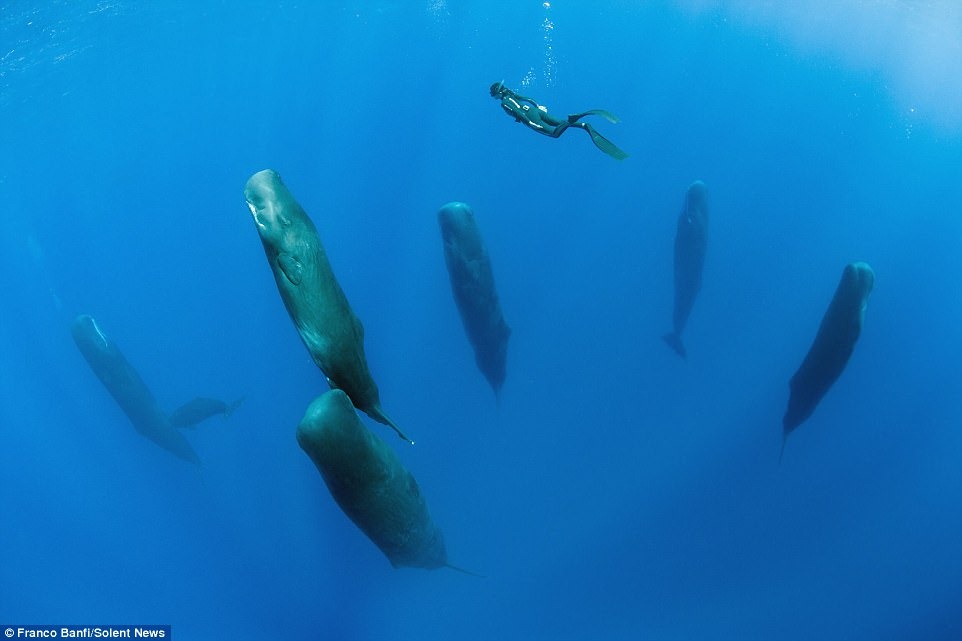Swiss wildlife photographer Franco Banfi and a team of scuba
divers were following a pod of sperm whales off the coast of
Dominica Island in the Caribbean Sea, when suddenly the large
creatures became motionless and fell into vertical slumber. This
phenomenon was first discovered only in 2008, when a team of
biologists from the UK and Japan inadvertently drifted into a group
of sperm whales floating just below the surface, completely
oblivious to their surrounding. It was only when one of boats
accidentally bumped into one of the whales, did the animal woke up
and the entire pod scurried off.

Until then it was thought that sperm whales, like other toothed
cetaceans, slept with one side of their brain turned on to do
important things that require physical activity, such as swimming
or coming to the surface to breathe or avoid predators. It’s like
keeping one eye open at all times, never fully letting their guard
down.
The 2008 incident suggested that whales might sleep with both
sides of the brain turned off. The researchers also discovered that
whales take short, but periodic, bouts of sleep throughout the day
with periods ranging between 6 and 24 minutes, but drift into deep
sleep for only about 7 percent of the time. These these brief naps
might be the only time the whales sleep, which would make sperm
whales possibly the least sleep-dependent mammals known to man



